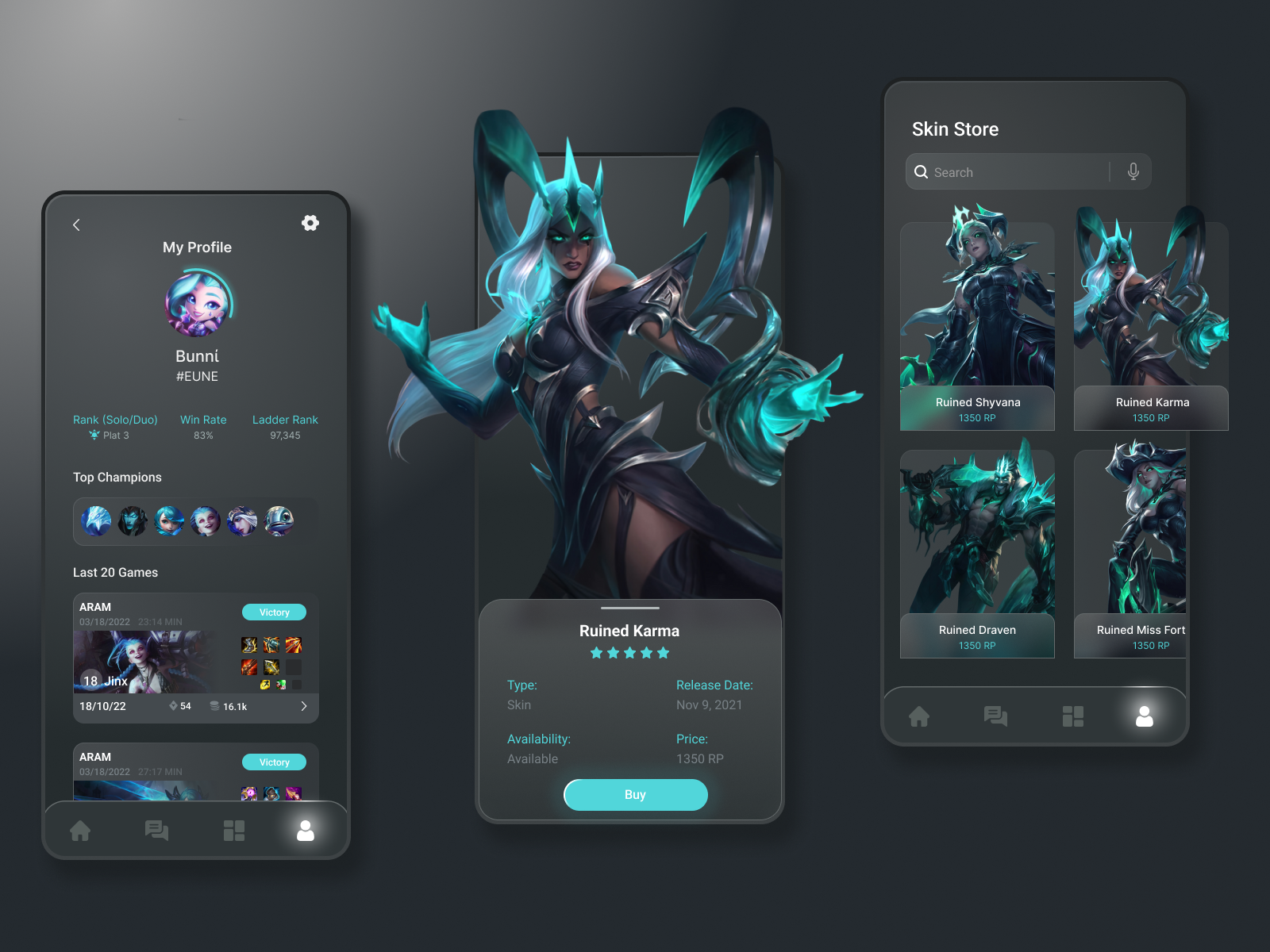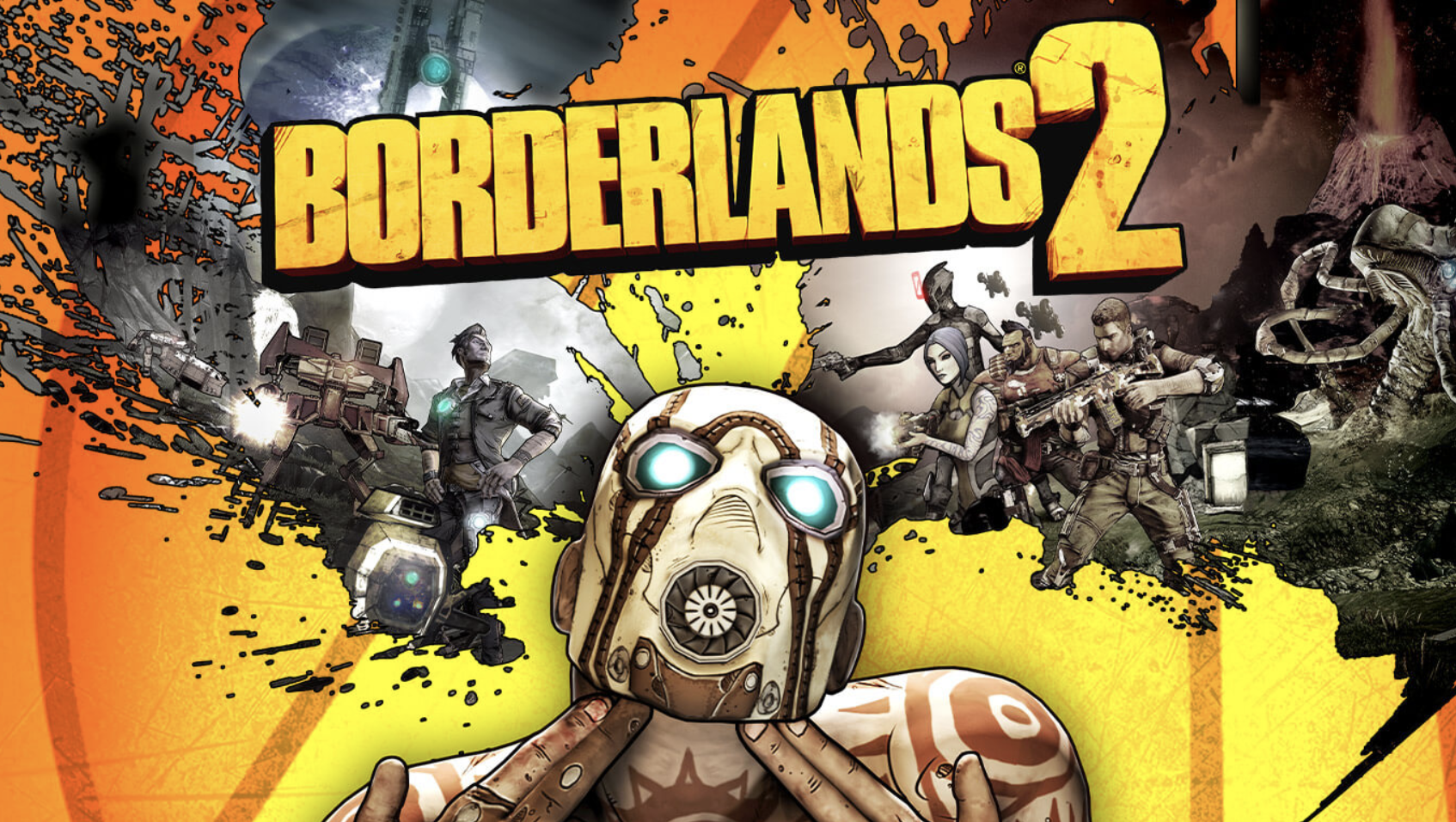In this topic you will be introduced to the principles of game design and development. Firstly let’s take a quick look at some statistics about gaming before considering what defines something as game as opposed to a toy or other kind of product, and why people play games.
Gaming Statistics and Facts
Games remain of one of the most popular forms of entertainment in the world today. The computer/video games (PC, console and mobile) industry is a multi-billion-dollar industry. According to Truelist (January 2022) the revenue generated by the industry is around 300 billion US dollars. This is “mainly due to the advent of mobile games and, lately, the COVID-19 pandemic.” In addition, Truelist asserts that “aside from the sheer industry size, its effects are helping shape up entertainment and culture.”
Here are some quick statistics about gaming worldwide that illustrate the sheer size of the industry:
The above statistics are show the sheer size and volume of revenue, users and other facts. If you would like to know read more gaming industry statistics check out the following links:
- Playtoday (April 27, 2022) 24 Mind-blowing Gaming Industry Statistics for 2022
- Playground (2019) 50+ Video Game Statistics, Facts & Trends
- Gaming Scan (June 2021) 2021 Gaming Industry Statistics, Trends & Data
- Finances Online (2022) Number of Gamers Worldwide 2022/2023: Demographics, Statistics, and Predictions
What is a game?
Mitchell (2012, p.2) states: "If we define a game as an activity that brings pleasure, that definition is too broad. Many things can bring pleasure, like reading, cooking, or engaging in conversation with a good friend. However, if you combine an activity with a challenge and a set of rules, then you have the basics of what makes a game. The challenge is to reach the end goal—to win—using the game components and the rules for using them.”
Games are a form of entertainment, but they are not passive. Unlike reading a book or watching a movie they require interaction and activity. Games are not just random play either, they have a point, purpose, or challenge to them.
A game exists in its own world, and the purpose of a game to overcome the challenges that arise in the world of the game. This ‘world’ is sometimes referred to as the ‘magic circle,’ a space in which the normal rules and conventions of our real world are suspended and replaced with an artificial or virtual reality. Furthermore, the game world has its own, self-consistent and competitive rule set, and any possible action or state encountered in the game must be defined by that specific rule set. Additionally, a game must have some type of ‘conflict’ where one agent is attempting to block another. This could be player vs player or player vs. non-playable character.
Crawford states that “a game is a closed, formal system that subjectively represents a subset of reality”(p.4).
Let’s break this down:
- The ’closed formal system’ means the game has explicit rules that define the set of actions and states within the game. The rules and allowable states form the "magic circle" of the game.
- A game has both an objective reality (e.g. chits, cards, figures, dice, a board, icons) and subjective reality (e.g. aliens, marines, cities, carriers, people, houses, monsters). The objective reality provides concrete indicators of the game state, while the subjective reality is a fantasy world built on top of the objective game state. The degree of difference between the objective and subjective realities does not actually limit the degree of fun in a game. Modern video games, however, have significantly reduced the visual, aural, tactical, and even proprioceptive (limb movement and reflex are examples of this) differences between reality and fantasy. Games today can make subjective reality easy to access and immerse oneself in.
- A game is not reality. A game does not need to follow the rules of reality and, in fact, maybe more fun if the rules of the game flaunt or otherwise ignore social customs or even physics.
- A game must balance the complexity required for gameplay with the need to keep the game focused and limited in scope.
There is a wealth of information available in books and online that considers the question “what is a game”. Whilst there may be variances in the specifics there appears to be universal agreement that a game can be called a game when the following things are present:
- The player has control over something (a character for example)
- The player must complete an objective, or series of objectives to complete the game.
- The game has a specific set of rules that govern the world of the game.
- There is exists within the game an element of competition.

Why do people play games?
Games have been around since ancient times, and are played universally. Why do people play games? The simple answer is because they are fun! Writing for the New York Times Von Ehren (11 June, 2020) states that:
“Games occupy a strange place in our cultural consciousness. Nearly everyone has played a game at some point in their lives. Despite that ubiquity, games are rarely discussed with the same reverence as other media like films or books. For most, games are like chocolate: a guilty pleasure consumed secretly. The game designer Sid Meier once remarked that “a game is a series of interesting choices.” Navigating these choices shapes the course of play, revealing who we are and how we think. Playing a game is an act of exposition.”
What do you think this means? How is a game “an act of exposition”?
Mitchell (2012, p.1) states that humans “have played games for thousands of years, to learn how to improve military skills, increase math and business abilities, learn new talents, sharpen old ones, and just have fun. Games are an integral part of being human, and there seems to be a game to fit each of our many different interests. Games have evolved right along with humans, and their development has been influenced strongly by culture and technology.”
In his seminal text “The Art of Computer Game Design: Reflections of a Master Game Designer” (1984) Chris Crawford presents a number of reasons why people play games. He argues that in our present day games “ are now too varied, too intricate, and too culturally involved to indicate the fulfillment of any single need” (p.13)
So apart from playing games for fun and enjoyment, and for educational or instructive purposes, why do people play games. Taking the cue from Crawford we can identify the following additional reasons:
-
Fantasy

This is also referred to as EXPLORATION. Fantasy is considered an important aspect of play, and vital to activities such as recreation, art and of course games. Crawford states that like “a movie, a book, or music, a game can transport the player away from the tawdry world that oppresses him and create a fantasy world in which he can forget his problems. Games are potentially superior to the traditional means of escape (movies, books, music) because they are participatory. Instead of merely watching a movie, reading a book, or listening to music, the player is actively involved in the game. Indeed, the player drives the game, controls it in a way that is quite impossible with the passive fantasies. This need to escape, to fantasize is certainly an important motivation.”
-
Nose-thumbing
Through games users have the opportunity to take on characters and roles that may not be socially acceptable or engage in behaviours that contravene social values and morals and break established laws. They may also be non-human characters with characteristics that contravene accepted natural laws and rules (this ties in with the concept of fantasy). Think of popular games like Grand Theft Auto for example.
Crawford also suggests that there are roles that are socially acceptable, yet the character can behave in ways that are discouraged in real life. He uses the game of Monopoly as an example stating that it “encourages players to engage in what the Federal Trade Commission delicately calls “predatory trade practices”” (p.14)
Any game that has violent content allows the player to behave in many ways that contravene accepted behaviour in society. Role playing games allow players to take on various characters, and often allow for the selection of character traits aligned to good, evil or neutral. Crawford states that the “player can thumb his nose at social strictures and engage in violence and mass murder without risking censure” (p.14)
-
Proving oneself
It is a pretty normal thing to have an urge to prove ourselves, and gaming provides ample opportunities for competition. Ever since the advent of arcade games there has been a desire to beat the high score! Crawford (p.15) has this to say:
“All games support this motivation to a greater or lesser degree. Many game-playing communities sponsor tournaments or player ratings. Arcade games support this function by recording and displaying the initials of the top-scoring players."
The advent of Esports – organized multiplayer gaming competitions are perfect example of how people can prove their prowess, and provide inspiration for others to improve their gaming skills and prove themselves. The professionalisation of the sport means prowess is now rewarded. Gamers regard themselves as athletes. Check out this video as an example:
-
Exercise
Crawford argues that another motivation for playing games is exercise. He uses the term broadly to include both the physical domain and the mental/cognitive domain of a person. Certainly there is evidence that gaming can promote neurogenesis, that is the increase of new neurons in the human brain and improve the connections in the areas of the brain that are responsible for memory formation, strategic planning, spatial reasoning and fine motor skills (Kühn, Gleich, Lorenz, Lindenberger & Gallinat 2013). Blank-Rochester (2010) outlines research that strongly suggests that “video game players develop a heightened sensitivity to what is going on around them, and this benefit doesn’t just make them better at playing video games, but improves a wide variety of general skills that can help with everyday activities like multitasking, driving, reading small print, keeping track of friends in a crowd, and navigating around town.”
Reed (2017) considers a number of benefits to person’s health as a result of playing video games, adding support to Crawford’s idea that exercise is a reason why people play games. Read Reed’s blog for further information.
-
Need for acknowledgment
Abraham Maslow was an American psychologist who is best known for creating the “Hierarchy of Needs”. He asserted that our actions and behaviours are motivated by a number of psychological needs – physiological, security/safety, social needs, esteem needs and self-actualisation needs (Cherry 2022).
The need for acknowledge falls under the social needs and can be defined as cknowledgement can be defined as the act of being recognised for who you are, or doing or achieving something. Crawford (p.16) argues that “we all need to be acknowledged, to be recognized by other people. The acknowledgment we crave is not merely an acknowledgment of our existence, but of our personalities ……. People value acknowledgment enough to expend the effort to obtain it.”
Interaction in games facilitate the meeting of this need for acknowledgement. Online gaming especially co-op play that is now avaible in a lot of games supports interaction.
-
Social lubrication
Following on from the need for acknowledgement, online gaming and co-op play supports social contact or in Crawford’s words ‘social lubrication’. De Winter and Sheldon (2018) assert that “much of gaming is designed to be social activity. Games that enable multiplayer mode give groups – families, friends, strangers from across the world – the space for digital interaction and competition.” They go on to state that the “sociality of games helps players identify their place in both the fictional gaming world, and real world, which translates across countries and cultures. Players don’t have to speak the same language to help each other with a quest and fight toward the same end goal.” The University of Jyvaeskylae (2007) boldly assert that online multiplayer games can lead to the formation of lasting relationships. The prevalance of LAN parties – a gathering of a group of gamers with computers or consoles that are all connected the same local area network (LAN) is a classic social event that has been around since the 1990’s and provides both social interaction and competition.
Whilst Crawford’s list of player motivations is regarded highly in the field, Bostan and Öğüt (2009, p.1) state that at present “an integrated model of player motivation is non-existent”. Some alternative lists of player motivational factors are provided below. As you read them take note of the similarities and differences with those posited by Crawford.
Malone & Lepper (1987)
- Curiosity
- control
- challenge
- recognition
- competition
- fantasy
- cooperation
Yee (2006)
- Teamwork
- fantasy
- advancement
- relationship
- discovery
- customisation
- escapism
Ryan & Deci (2000)
- Competence
- autonomy
- relatedness
Identifying and understanding the motivations and reasons people play games is just one of the important considerations in game design. An optimal gaming experience requires a combination of other factors that will be considered in this topic and other topics in this module.

Intel (n.d.) state that “games share a common language, even if it isn’t always visible. Though Cuphead might differ greatly from HITMAN 2 in content, both games could be viewed as manifestations of larger game design principles.” In this section of the topic you will be introduced to some of the underlying principles that inform game design.
What is Game Design?
Game design is the ‘art’ of creating games. It is a term used to describe the process of game creation from conceptualisation to design, development and release. It involves the creation of compelling stories, characters, the world of the game, and the rules, goals and challenges of the game that drive interactions with other users, characters or objects. In the game design process, you will consider game mechanics, incentives and rewards, player engagement and level design.
In the following video, the presenter describes the role of a game designer. It is a promotion video for a Game Design qualification, but it does provide an overview of the range of tasks and activities a game designer will have to opportunity to engage in.
Reflective Task
Think of one of your favourite games. It could be a video game, a board game, a sport, or any other kind of game that you played when you were younger or that you like to play now. Write a paragraph that describes the game’s “player experience”:
- As a player, what do you do in the game? (Are you moving around, using your reflexes, using your imagination?)
- What do you experience that makes the game fun?
- How do you feel when you are playing the game?
Be descriptive! Focus your writing on how you feel when you play the game rather than on the specific rules or procedures of the game.
Keep your responses to these questions in mind as you explore the principles of game and consider how the game you chose adheres to the principles of design (or not).

Principles of Game Design
Good game design is what makes games fun. As a game developer, you can have all the fancy graphics and the most complex narrative ever created. But if you don't have the basics of good game design incorporated, it's unlikely that those that play the game will want to immerse themselves into the world of the game.
Game design principles focus on the players' experience from start to finish. They inform how the player will play the game, from the core mechanics of the game to its overall story arc. It's both an art and science of how to gain players' attention and keep them coming back for more.
This is what Trainor-Fogleman (April 29, 2021) says:
“Good game design can be the element that makes or breaks a game from the first button push or keystroke. Good game design goes beyond the technical aspects of a game (like graphics and fps) and defines how a player will play and experience a game.
If you want to be a great game builder, you need to master some fundamental principles that make up an excellent game design.”
When it comes to the principles of game design one will find many variations in the number of principles of game design that are espoused. So, bear in mind that the principles outlined in this section are not exhaustive, but there is some agreement that they are central to good game design.
Let’s look at each of these principles in more detail.
-
Fidelity
The concept of fidelity in game design refers to the extent to which a game emulates the real world. Whilst there are some variations in the definition of fidelity, it is commonly conceptualised on two-level: Physical Fidelity and Functional Fidelity:
-
Physical fidelity:
The degree to which the game environment looks, sounds, and feel like the real world is physical fidelity. It is determined by factors including visual display, controls, audio, and physics models driving these variables. Argyll (Jun12, 2017) has this to say about the visual fidelity (an aspect of physical fidelity:
“Visual fidelity is everything in-game graphics. To the modern gamer, rocks should convey credible heft. Facial expressions should convince. Lighting effects should sparkle. Volumetric smoke should billow. Explosions should make us gasp. Gaming is a medium eaten with the eyes.”
-
Functional fidelity:
The extent to which a game acts like the real world in the way it responds to player actions is called functional fidelity. This includes aspects of the game such as narrative and interactivity.
-
-
A core game mechanic
Just about every game has a core mechanic. It is described as the actions or set of actions that players will repeat over and over as they play a game. The core mechanics of a game determine how that game actually operates: what its rules are and how the player interacts with them. Salen and Zimmerman (2003) state:
“Every game has a core mechanic. A core mechanic is the essential play activity players perform again and again in a game. Sometimes, the core mechanic of a game is a single action. In a footrace, for example, the core mechanic is running. In a trivia game, the core mechanic is answering questions. In Donkey Kong, the core mechanics using a joystick and jump button to maneuver a character on the screen. However, in many games, the core mechanic is a compound activity composed of a suite of actions. In a first-person shooter game such as Quake, the core mechanic is the set of interrelated actions of moving, aiming, firing, and managing resources such as health, ammo, and armour…”
It is a crucial design concept. The “experiential building of player activity” (Salen & Zimmerman, 2003) is contained in the core mechanics of a game - “the essential moment-to-moment activity of players, something that is repeated over and over throughout a game.” Good core game mechanics provide the ‘hook’ that keeps players engaged in the game and wanting to play it for a long time.
In the following article you will find some hints for focusing on the core mechanics of the game: Videogame Workshop (n.d.) Core Game Mechanics
-
Easy to learn, difficult to master

Consider what gamedesigning.org say:
"Have you ever wondered why chess, a game thought to have been around since the year 500 AD, is still played today?
A more interesting question to ask would be how you think chess and Super Smash Bros. are similar?
Aside from both being competitive games with losers and winners, one thing they have in common is this: they’re accessible yet have plenty of depth.
Both consist of simple rules that are easy to understand.
In chess, your goal is to capture the opponent’s king while in Super Smash Bros. the goal is to knock opponents off the stage.
This means that anyone can enjoy these games without the need to study a rulebook or take some kind of course beforehand, which is why they are both successful.
The key is that players who dedicate more and more time to these games can learn new playstyles and strategies.”
A good game is designed to be accessible for players, and easy to pick up and start, but as it progresses it gets harder to master. As a game designer, you want players to be able to load your game and begin playing as quickly as possible. This means that you need to teach the fundamentals of gameplay quickly and efficiently so that players are immediately engaged, and then stay engaged. This is achieved by ensuring that games get progressively harder to master. Trainor-Fogleman states “During level design, constantly ramping up the difficulty as players get more experience is crucial to building a game that players want to finish. A victory that is not at least somewhat hard-won doesn't feel like much of a victory, does it?”
What this illustrates is this principle is used repeatedly because it works.
-
Clear objectives and goals
Whilst games don’t necessarily need to have goals for players, they are a good idea for several reasons. Stillman(2021) states “there needs to be some kind of goal or outcome that people can work towards. The more concrete and defined these are, the easier it is for people to participate. However, fuzzy objectives can be more rewarding since they model real situations better.” Fristoe (September 21, 2015) gives two main reasons for having clear goals:
-
They help guide player behaviour
“Not all players need guidance, but many people play games because they want to solve specified problems. They like rules and want artificial incentives. Giving them a goal helps them enjoy themselves”
-
They help structure the gaming experience
Fristoe states “When I’m working on a game, I’m not just throwing together mechanics. I’m trying to sculpt an experience. And goals can really help shape that experience, controlling the game length and keeping things consistent between players and plays.”
Fristoe argues that what might constitute a possible goal is limitless but suggests a few common goals worth pointing out – points competitions, races, and elimination.
-
-
Rewards and feedback
Cieślak (June 11, 2021) writes that “feedback in games is a reaction, a response. The player performs an action, and the game reacts to it. And back again: the game generates situations that the player reacts to. Game designers offer players various rewards and punishments – e.g., gaining resources, discovering new locations, gaining new skills, or losing health points or items.”
Incentives that reward success can be intrinsic outcomes of the game (badges for completion for example), or they are embedded in the game itself (coins for scavenging, elite weapon rewards for completing levels or missions Balancing rewards between players can be a challenge and needs to be considered when adopting games.
Human beings thrive on positive reinforcement, so take note of what The New York Film Academy (January 14, 2016) says
”The top designers in the world know just how powerful positive reinforcement can be in keeping us engaged and excited. We, of course, want challenging experiences that test our skills and keep us on our toes, but it’s no fun if we don’t get anything out of it. Just like athletes like winning medals and dogs like getting a treat for not ruining the carpet, gamers are also motivated by praise and reward.”
They suggest that because of this there should be ‘more rewards than punishments, more power-ups than obstacles”.
Learn more about some of the ‘psychology’ behind game reward and feedback systems.
-
Clear success criteria
In any game there needs to be a way of knowing when the objectives are met. Clear success criteria help establish expectations and buy-in for game participation. There are of course some games are more unstructured, with less well-defined criteria. For example, a classic role-playing game like Dungeons & Dragons doesn’t have a clear overall objective. However, that ambiguity can make such games better able to model some scenarios, but such games may be harder to ‘sell’ for a games company because they don’t have a set ending.

In this last section let’s take some time to consider what are the factors that make up a good game – what are the things that engage players, pulls them in and keeps them playing the game and returning to play game? These factors are general to all game types and genres, so it is important to realize that the additional features and factors that make a first-person shooter game will differ from those for a role-playing or puzzle game (a consideration of game types and genres is provided later in this module).
Martin (Feb 27, 2014) thinks it is “a mixture of great gameplay combined with an outstanding story.". However, the literature on the subject suggests that it more than just gameplay and storyline that work together to create a great game. In fact, there are popular games that have some of these factors missing, and yet they are considered good or great. How about you? What do you think makes a game great? Take note also how these factors and features reflect the principles that were introduced previously.
The Story
The best video games can make you feel like you are part of the world of the game, experience genuine emotion, as if what is happening to the characters is happening to you. A storyline does not need to be complex or for that matter be particularly well written. A good storyline must, however, be solid enough to give gamers a purpose for playing. Even quite a simple goal, saying saving a princess is good enough if it gets gamers going, but it is great to come across a game with a deep and intricate plot. Double Take (Feb 24, 2022) state:
When asked what makes a great video game, a common answer is story. Similar to reading a story within the pages of a book, playing a game with an exceptional story line will draw you in the world. There way of telling a story through an interactive setting. Once there, you encounter well written characters you begin to have an emotional connection too. This creates the need to continue playing the game to see how the story unfolds with the character (your) decisions throughout the adventure.
Other writers think that it is great gameplay that trumps the storyline. But whilst “solid gameplay overpowers a great story; a good storyline is also part of a game’s success. Games that involve single-player experiences require more than just excellent gameplay to be appealing to players. Their lack of multiplayer element means they have to make up for it by creating a good story that arouses the players’ interest. So, mixing a great story and excellent gameplay rises above anything else to immerse the player in their gaming experience.” (Malen, Aug 2021)
Upson (May 19, 2020) categorises all genres of games according to the type of narrative they have:
| Narrative | Loose Narrative | Non-Narrative |
|---|---|---|
|
|
|
Upson also states that this categorisation is not clear cut, but “all of these [narrative types] flow into one another. They may borrow from each other or may contain games within the games that fall into another category, but games can exist between multiple states. Call of Duty is between Narrative and Non-Narrative because, while people pretty much buy it for online matchmaking now, they still have a campaign that tries to tell a story. Most RPG's are in-between Narrative and Loose Narrative as they utilize open world concepts to lay out a plot driven by their own battle system quirks. There are multiple paths to take outside the main quest, but when the story becomes too convoluted, the player can still enjoy the combat because gameplay is a primary focus. Puyo Puyo Tetris is between Non-Narrative and Loose Narrative because you can still play a classic game of Tetris, but a linear "story" mode is included to complete levels with specific challenges incorporating several characters.”
The other thing to note about the storyline is that is not necessarily conveyed through dialogue, the environment and gameplay can be used to “heighten the experience and show you a story rather than tell you one.”
Gameplay
The notion of gameplay focus on the things that make a game more interactive and great to play. Malen on Gamespace believes that “gameplay determines the overall success of the game” and argues that popular games like “Angry Birds have managed to stay at the top thanks to the incredible gameplay they offer to their players“.
There is a diverse range of opinions about what exactly the concept of gameplay includes. Tyler (Dec 24, 2021) makes the following distinction:
Game mechanics are the aspects of the game design, or rules, in which the player follows within the game world. These dictate how the player acts within the game. For example, a game mechanic of having missions and objectives for that mission forces the player to adhere to those game mechanics. Gameplay, on the other hand, is what actually takes place when a player plays the game. Missions are the game mechanics; completing and engaging with that mission is the gameplay.
Other writers (Upson (2019), Li (2018), & Malen (2021)) include other factors like the game controls, the immersion in the gaming experience. “When the word game comes into play, you think of the games themselves, but you also think of the game mechanics that you need to play that game. The controls it takes to play the game, the control of the character and the mix of element you encounter as you play.”(Double Take, 2022)
When it comes to game controls the ease in which a player is able to learn the controls of a game with the progression to more difficult challenges contribute to good gameplay. “The most successful games just feel good to play. When done right, controls make a game easy to learn but difficult to master. You should be able to make natural, split-second decisions without thinking about it. The point where games most often fail here is with camera controls. You should be able to orient your view just right to get your character to do what you want them to do.” (Li, 2021)
Graphics
Art and graphics are extremely important for any video game. The things provide what the player sees and ranges from the game environment to the characters. These visual features also contribute greatly to a player’s gaming experience and the storyline of the game.
What determines good game graphics has more to do with how it fits with other factors such as the storyline, player expectations, the way in which players interact with the world of the game, and control characters for example.
Think about games that have remained popular. They range from rudimentary, blocky, pixelated worlds and characters in Minecraft,

To the cartoon-like realism of the Borderland series of games,

And a greater degree of life-like realism of the later iterations of the Call of Duty franchise

Double Take (2022) writes “Graphics and cinematic cut scenes are providing the visual that goes along with a great story. Of course, your imagination is already decided for you; but getting a clear picture of the story being told through video game mechanics while deciding to explore, complete missions or collect items gives your brain more power to solve puzzles and navigate the environment during the game.
Whether realistic or cartoon-based graphics that fit the gameplay and story, with it’s unique world, characters, and more create memories and experiences that last a lifetime that can be passed down throughout the years. Mario Brothers is a great example.”
There are plenty of games that are fantastic in spite of graphical shortcomings (I’m looking at you, Undertale). We’re talking about the “show me, don’t tell me” concept of storytelling. From retro 8-bit displays to the latest cutting-edge renderings, successful games use their graphics in ways that create captivating and memorable experiences.”
So, game graphics and art are important, but on their own not sufficient for a good gaming experience.
Challenge
Crucial to a game’s success is not only the excitement of challenging gameplay but also the corresponding balance of matching rewards. A game that is too challenging without the balance of reward can become frustrating very quickly. By the same token, a game that is too easy, despite rewards is boring. Malen (2021) writes “the best games need to be tweaked to provide a good escalation of an exciting challenge to players and make them feel tested for the reward. Whether it’s for the first time or not, the game should also provide you with options to unlock new levels and other achievements.”
Great games provide players with goals they need to accomplish to get to the next step. This provides a sense of victory as one progresses through each level or area. Players are also able to gain progress with side missions, exploration, and collectibles while being able to stay focused on the main goal of the game. It is that sense of accomplishment, regardless of how big or small it is, is a part of the reason why gamers continue with the completion of the game, along with the other features we have considered in this section.
In closing it is important to note that whilst we have focused on these four factors, we should also keep in mind that other features and factors contribute to what makes a good game. Factors like
- Originality and consistency,
- Replayability
- Interesting and relatable characters, and
- Music and other audio features (the soundtrack of the game).
At the end of the day as Li (2021) states
“Trying to put your finger on the exact factors that make a great game so awesome is going to depend on who you ask. All gamers are unique, and one’s trash is often another’s a treasure. Approach each gaming experience with an open mind, try to see what other people appreciate about it, and you may be surprised when you fall in love with a game outside of your typical interest zone.”
- Story: The story behind the character journeys, their goals, missions, collections and more draw players to the game.
- Design: Visuals and graphics provide a deeper connection, experience and memories to enjoy for years to come.
- Gameplay: The game world you explore whether open world or focused give choices and easy control of characters as they progress.
- Variety: Like books, games have a variety of genres to choose from to appease all types of personalities and interests.
- Other: Things that keep you playing like achievements, replayability and music/sound effects give the game that final touch you're looking for.
Having an awareness of player motivations and interests can help you as a game designer. A good place to start is to think about your own experience - do you have games that that you enjoyed playing, and have played them more than once? Take some time to identify the things about those games that keep you interested.
Keep them in mind as we move to the next two topics of the module where you will learn about both game and mobile UX and engage in some activities where you start to build your own game.

